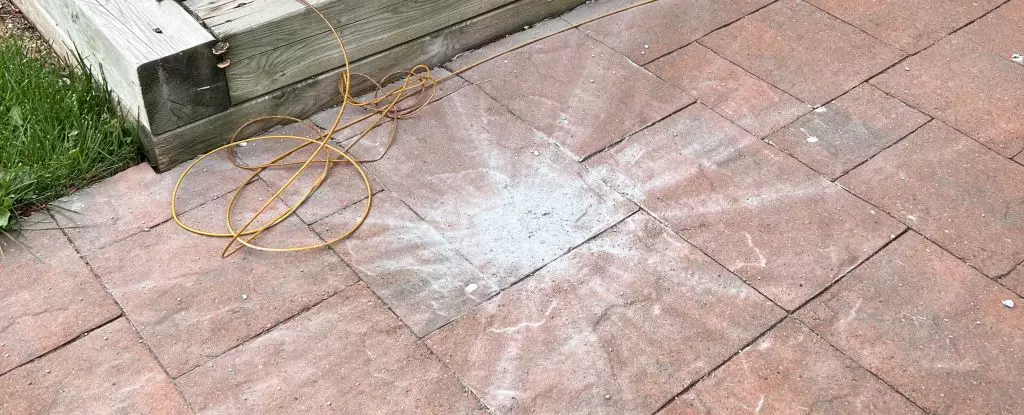In a world increasingly dominated by technology, where cameras are nearly omnipresent, a miraculous occurrence unfolded in July 2024 on Prince Edward Island, Canada. A Ring doorbell camera, typically used for home security, became an unexpected witness to a cosmic event when it recorded a meteorite crashing to the ground. The video captured not only the sight of the meteorite soaring through the sky but also the remarkable audible impact as it collided with the pavement right outside the home of Joe Velaidum and Laura Kelly. This incident may very well mark the first occasion in history where the sound of a meteorite impact has been documented, according to geologist Chris Herd from the University of Alberta. He expressed, “The Charlottetown Meteorite has made a remarkable entrance, presenting a rare glimpse into a meteorite fall that includes sound.”
The backdrop of this extraordinary event was quite ordinary: Velaidum and Kelly were out walking their dogs, likely engaged in the mundane rhythm of daily life. Upon returning home, they stumbled upon some peculiar gray fragments spread across their front walkway—a result of the meteorite’s impact. However, the true significance of what transpired went unnoticed at first. It was only after Kelly’s parents, residing next door, inquired about the loud noise they had heard that the couple connected the dots. They recognized the possibility of the debris being remnants of a meteorite, prompting Velaidum to check the recorded footage.
The surprise of discovering that he had unwittingly stood mere moments away from a meteorite’s descent imparted a sense of surrealism and imminent danger. Velaidum reflected, “What astonished me was that I had just been there a few minutes before this happened. Had I been there a moment longer, who knows what could have happened!”
Meteoritic events are far more common than one might think. It is estimated that about 48.5 tons of meteoric material enters Earth’s atmosphere on a daily basis, predominantly disintegrating before reaching the surface. Meteorites that manage to withstand the atmospheric entry and reach the ground are rare occurrences. Statistically, fireballs, which are visible meteors, are only observed a few dozen times annually, while those large enough to survive the descent often land in the oceans that encompass about 71% of the Earth’s surface.
The fortunate couple that discovered the remnants had a stroke of luck when they notified Herd, who subsequently examined the fragments. Remarkably, they also uncovered that the impact created a tiny crater, just 2 centimeters in diameter, corroborating the violent nature of the meteor’s entry.
Upon further analysis, it was determined that the meteorite was classified as an ordinary chondrite—a type of meteor that consists primarily of non-metallic minerals. These ordinary chondrites represent significant remnants from the early solar system, retaining insights about the primordial materials from which planets, asteroids, and other cosmic bodies formed. As the majority of meteorites retrieved consist of this classification, they still provide invaluable scientific context about the history of our solar system.
By examining such materials, scientists can glean information regarding the environmental conditions prevalent in the early solar system as celestial bodies began to coalesce into the larger structures we see today. Thus, the Charlottetown Meteorite is a not just a local curiosity; it is a valuable piece of the greater cosmic puzzle.
While the likelihood of a meteorite striking an individual is remarkably low—there are few documented cases of meteorites hitting people—the encounter in Charlottetown has left many intrigued. For those restless to experience a connection to the cosmos, a rather less thrilling alternative is to sift through the accumulated dust on their roofs. With space dust constantly bombarding Earth, one may be able to find microscopic particles that originated from distant celestial bodies. However, distinguishing space dust from earthly pollutants may prove to be a daunting task.
The incredible event witnessed on Prince Edward Island might inspire a newfound fascination with meteorites and the mysteries they hold. With each fallen fragment, we are reminded of the vastness of space and our planet’s place within it. The unique circumstances surrounding this occurrence reveal how modern technology is transforming our understanding of celestial phenomena, providing us with unprecedented insights and documenting events previously observed only in the shadows of the cosmos.
As interest in space continues to grow, whether from avid amateur astronomers or casual observers, the chances of witnessing another unusual encounter with extraterrestrial materials may just be around the corner. Happy hunting, indeed!

